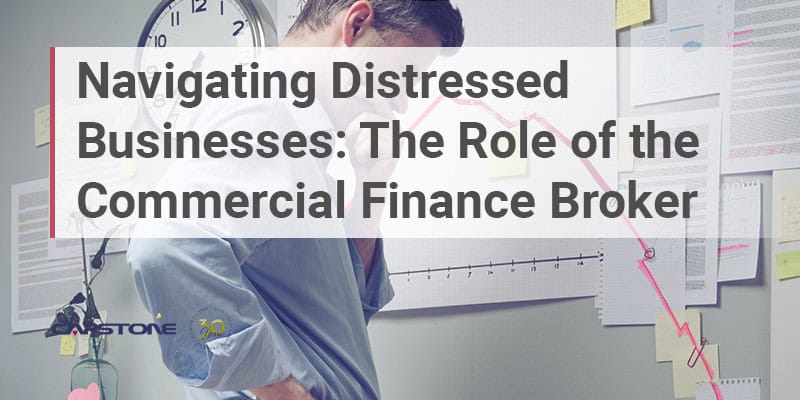The New Year ushered in the implementation of newly inked commercial finance disclosure regulations (“CFDR”) in New York, Utah, and California. At least nine states across the country have, or are considering, consumer-style disclosure requirements in the form of disclosure bills, disclosure laws, and disclosure regulations. The New York State Department of Financial Services announced disclosure regulations for NY’s Commercial Finance Disclosure Law effective August 1, 2023, while compliance with California’s and Utah’s CFDR became effective January 1, 2023.
CFDR legislation has far-reaching implications for lenders, commercial finance companies, financial brokers/ISOs, and small businesses. It encompasses the full range of commercial financial products, including closed-end transactions, open-end credit plans, invoice factoring and sales-based financing, lease financing, asset-based lending transactions, and MCAs.
Providers of commercial financing will now be subject to new laws and regulations requiring that they provide consumer-style disclosures for transactions, and brokers will be responsible for fulfilling certain steps in the disclosure requirements.
Original Intent of Disclosure Regulations
The original intent of the disclosure regulations was to provide Truth in Lending-like disclosures which were designed to protect clients (small businesses), and curb predatory lending practices.
These new disclosure requirements are modeled after the disclosures required for consumer credit transactions in the Truth in Lending Act (“TILA”) despite the significant differences between the terms of consumer and commercial credit transactions. The disclosure regulations overlay consumer-style loan disclosure requirements onto commercial finance transactions which will result in negative consequences for all the parties involved – clients, providers, and brokers.
Negative Impacts on Small Businesses
Legislators, well intentioned as they might be, seem to be interpreting laws without having much knowledge of the industry. Accordingly, there are bound to be significant problems because of this. Legislators may think that TILA concepts are applicable to all financial transactions, but they do not translate exactly in the context of commercial finance transactions like sales-based financing and accounts receivable factoring transactions. These types of transactions do not typically have fixed terms or easily calculable payment amounts and APRs. In some instances, the calculations are impossible and only create confusion for all parties.
Non-bank commercial lenders and financial service companies simply do not have experience complying with consumer-style disclosure regulations. This one-size-fits-all approach to regulating consumer and commercial finance transactions will have a number of negative impacts, including:
- CFDRs will freeze many small businesses out of the commercial finance market and limit their financing and business funding options.
- Lenders and financial service providers will pull out of some states altogether and will not be able to provide service anymore.
- Lenders won’t want to risk being penalized for funding small transactions. In New York for example, the Department of Financial Services can impose a civil penalty of $2,000 per violation of the CFDR and $10,000 per willful violation.
- CFDRs will impact underwriting practices and slow the process down.
- The regulations add lender/ provider compliance hurdles which increase costs and reduce incentives to provide some financial products and service segments of the market.
- Brokers may not be able to find business funding for their clients in certain markets.
- Fees charged by brokers may have to be disclosed to the client.
- Disclosures would be inaccurate or misleading in some cases and confusing to clients which can lead to loss of business.
Scope of Commercial Finance Disclosure Requirements
The disclosure regulation’s definition of “providers” in commercial financing is overly broad and includes all types of providers of commercial finance and business funding transactions currently available in the market.
In California and New York, there are disclosures for each type of commercial finance product. They are very specific and differ depending on how the transaction is classified. Disclosures must be made at the time of extending a specific commercial financing offer (when an offer is quoted to the recipient and prior to funding), and they must be signed by the client and returned to the broker or provider.
Disclosure requirements are ongoing for every transaction over the client relationship however general exemptions are provided for large-dollar commercial loans or transactions. The exemptions will also differ by state. In New York, for example, the statutory threshold is transactions in amounts up to $2.5MM while in California that amount is $500,000. Thresholds like these leave small businesses to bear the brunt of the regulations.
Brokers are not responsible for the content of disclosures, but they are responsible for relaying the disclosures from the provider to the client, obtaining signatures, delivering signed disclosures back to the provider, and in California, retaining records.
If a broker is involved, a copy of the broker disclosure must be provided with the other disclosures. Providers may need to include warranties in the broker agreement and discontinue relationships with brokers who engage in a pattern of noncompliance with disclosure regulations.
The ink is barely dry on the new disclosure regulations so a lot of interpretation will follow from the outcome of lawsuits that will be filed by members of the industry. Brokers will need to be among the parties that need to know the latest developments.
There has been a lot of pushback from the industry with lenders even filing suits contesting California’s regulations. Commercial finance companies find it extremely difficult to have multiple financial products under one umbrella and utilize a uniform financial disclosure. It’s overly ambitious by lawmakers to try and loop all these financial products into one.
For example, invoice factoring is not a loan but yet falls under the same umbrella of a finance transaction according to the CFDR. Invoice factoring represents a true sale of an asset so therefor there is no meaningful APR to be calculated and there is no defined transaction term. A factoring fee is charged which is not the same as a typical finance charge in a loan type transaction. Payment on the accounts receivable is made by the client’s customer (account debtor) and not by the client. Factoring is a completely different financial product with many variables.
There are many important unresolved issues, including definitions, calculations, and thresholds. Required calculations are mathematically impossible to provide in certain instances, or too costly to generate.
Required Disclosures for Invoice Factoring Transactions
CFDRs generally require disclosures for the following:
- Funding provided – The amount financed: This is how much the provider will disburse when the client factors an invoice with the provider.
- Annual Percentage Rate – Calculation of APR: This is the estimated cost of the client’s business funding expressed as a yearly rate. APR seeks to include the amount and timing of the funding the client receives, the fees the client pays, and payments made to the provider.
- Finance charge – Total finance charge: The calculation of the finance charge, with the amount and description of each expense (e.g., factoring fee, origination fee, etc.) that is included in the finance charge.
- Payments – Amount, frequency, and method of payment.
- Estimated term – Term of transaction: A short explanation describing how the provider calculated the term.
- Prepayment terms – Description of prepayment policies and how the prepayment amount is calculated.
There are also general disclosure requirements, including formatting, font size, columns, rows, and mandatory language.
Disclosures must be included when the provider communicates a specific offer directly to a client or to a broker with the expectation that the broker will share the offer with the client.
These regulations also include provisions for fines, penalties, and cease and desist orders. Willful violations may actually be considered a crime. Each state with disclosure regulations has not released an actual template for the disclosure, which is telling, and it has also been extremely difficult for commercial finance companies to obtain guidance.
Brokers/ISOs Need to Work with Knowledgeable Financial Service Providers
Because the disclosure regulations are so new, much interpretation will come later, which is not a comfort to providers or brokers who need to start complying now. Brokers/ISOs need to stay up to date on CFDRs to be in compliance, and be able to explain required documents and language to clients. Working with a knowledgeable financial service provider can help you understand the requirements of the new disclosure regulations so you may continue to grow your book of business.
Please contact Capstone today at (212) 755-3636 to see how we can help you to better serve your clients and navigate the newest requirements in commercial finance disclosure regulations.






